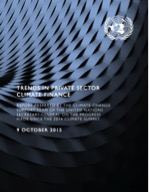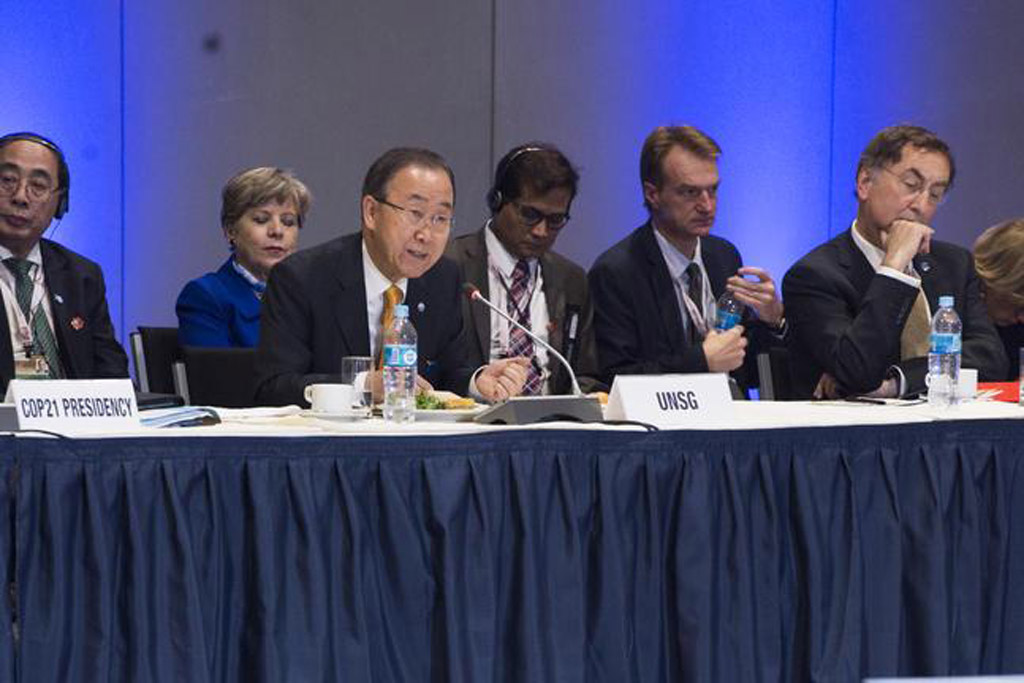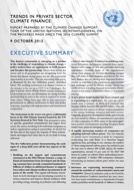‘Trends in Private Sector Climate Finance’ highlights need to scale up green bond market
Friday’s launch in Lima by UN Secretary General Ban-Ki Moon of a comprehensive overview of market based climate investment has confirmed the growing importance of green bonds to finance climate friendly developments.
“The emergence of green bonds represents one of the most significant developments in the financing of low-carbon, climate-resilient investment opportunities,” is the introduction of the section on green bonds.
Along with detailing the rapid growth in green bond issuance since 2013 the report notes several significant but sometimes overlooked aspects of green bonds.
Risk-Return characteristics
“Green bonds offer an attractive way to access institutional investor capital as the risk and returns of the bonds are typically determined by the issuer’s full balance sheet, not just the green assets.”
“Essentially, the treasuries of issuing companies have been providing the risk-bridge needed to get green projects and assets to an investment-grade rating that meets the needs of institutional investors.”
Projections for 2015
Green bond issuance is compared to unlabelled climate bonds and the estimated $100 trillion size of the existing global bond market.
“Issuance in 2015 is expected to be between $50 and $70 billion. In addition to the labelled market, there is a much larger universe of bonds that finance climate mitigation and adaptation that are not labelled as green.”
“As of June 2015, this additional unlabelled climate bond universe stood at $532 billion (Source: Climate Bonds Initiative, 2015). The energy and buildings sectors have received the bulk of proceeds to date (aside from multi-sector bonds) but, reflecting the growing maturity of the instrument, investment opportunities in transport, agriculture, waste and water have all been financed through green bonds recently.”
“Despite this growth, green bonds currently account for only a very small fraction of the estimated $100 trillion global bond market.”
These differences in scale give impetus to the report’s call for greater policy action by governments to strengthen frameworks that deepen and broaden the scope of green bond markets.
Pent up Demand
Unmet institutional investor desire for long term green bond opportunities and the oversubscription of recent issuances in 2014 and 2015 is also noted as is the increase in issuers from development banks and municipal entities to a range of providers that include: “corporates, banks and [providers of] green asset-backed securities’’.
Also highlighted is the step-by-step progress in China including the April 2015 Peoples Bank of China 14 Point policy recommendations for green investment, which gives specific green bond options such as:
“….an evaluation system for allocation of funds and environmental impacts of green bonds; tax incentives; preferential risk weighting in bank capital requirements; and fast-track issuance for green bonds.”
Green bond initiatives in other developing countries including India, Brazil and Mexico were also analysed.
The growing role of green bonds and the potential to scale up investment in to the hundreds of billions and beyond is clear from the report
There is a need for carbon pricing, innovative regulatory frameworks and new market rules to promote low carbon and climate friendly investments across all asset classes
At 50 pages including acknowledgements and references the full version is a surprisingly easy read. Here at Climate Bonds we think it’s worth 30 mins of your time.
Download:
“Trends In Private Sector Climate” full report



